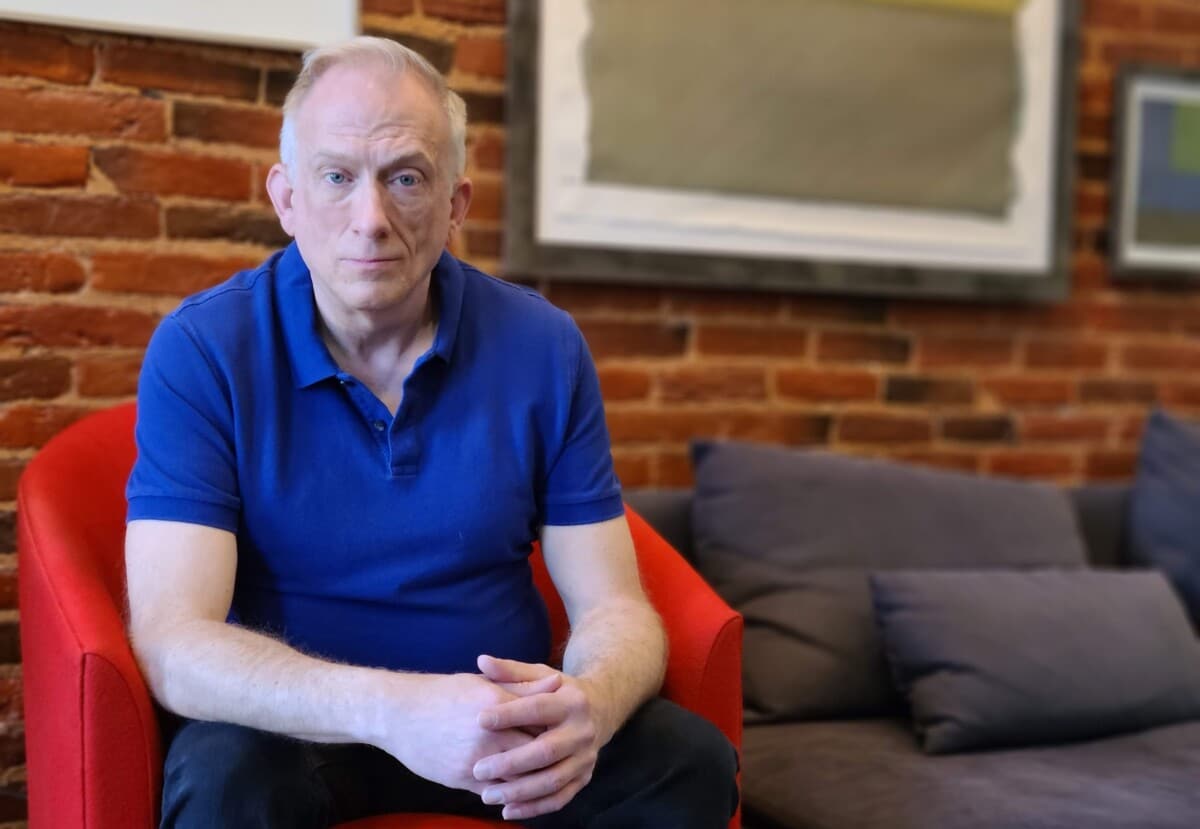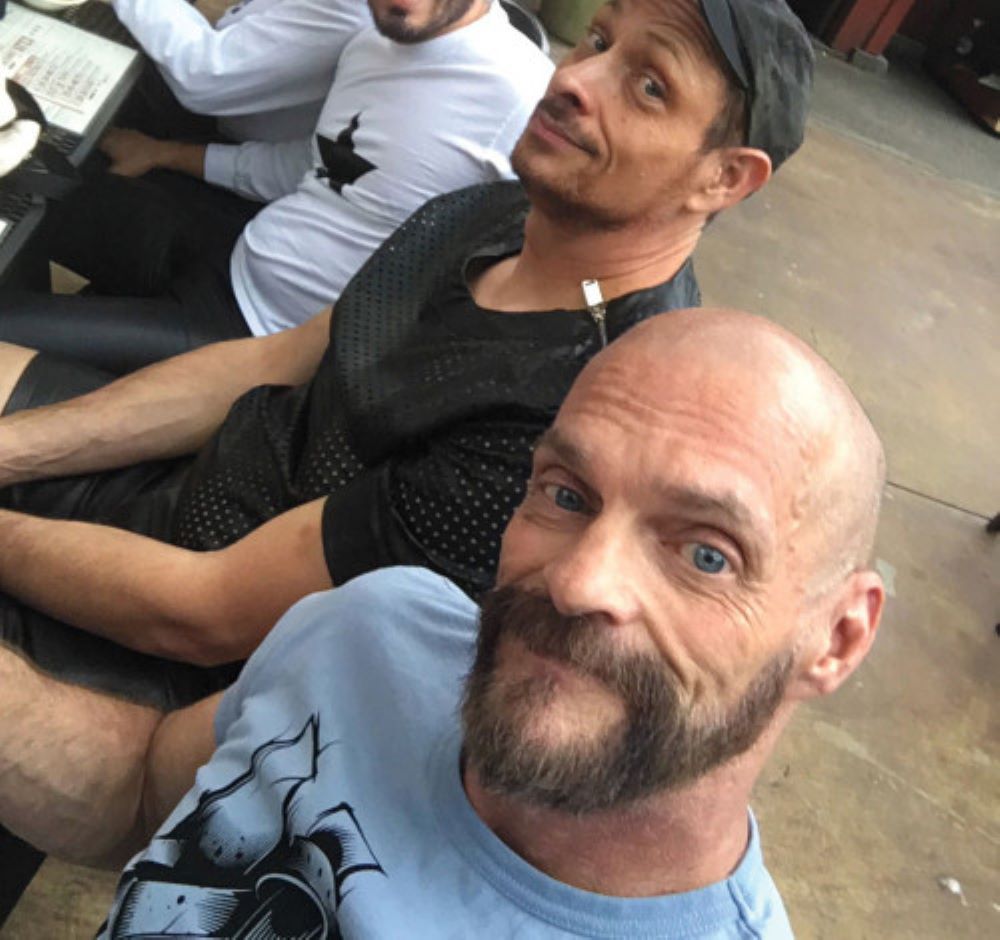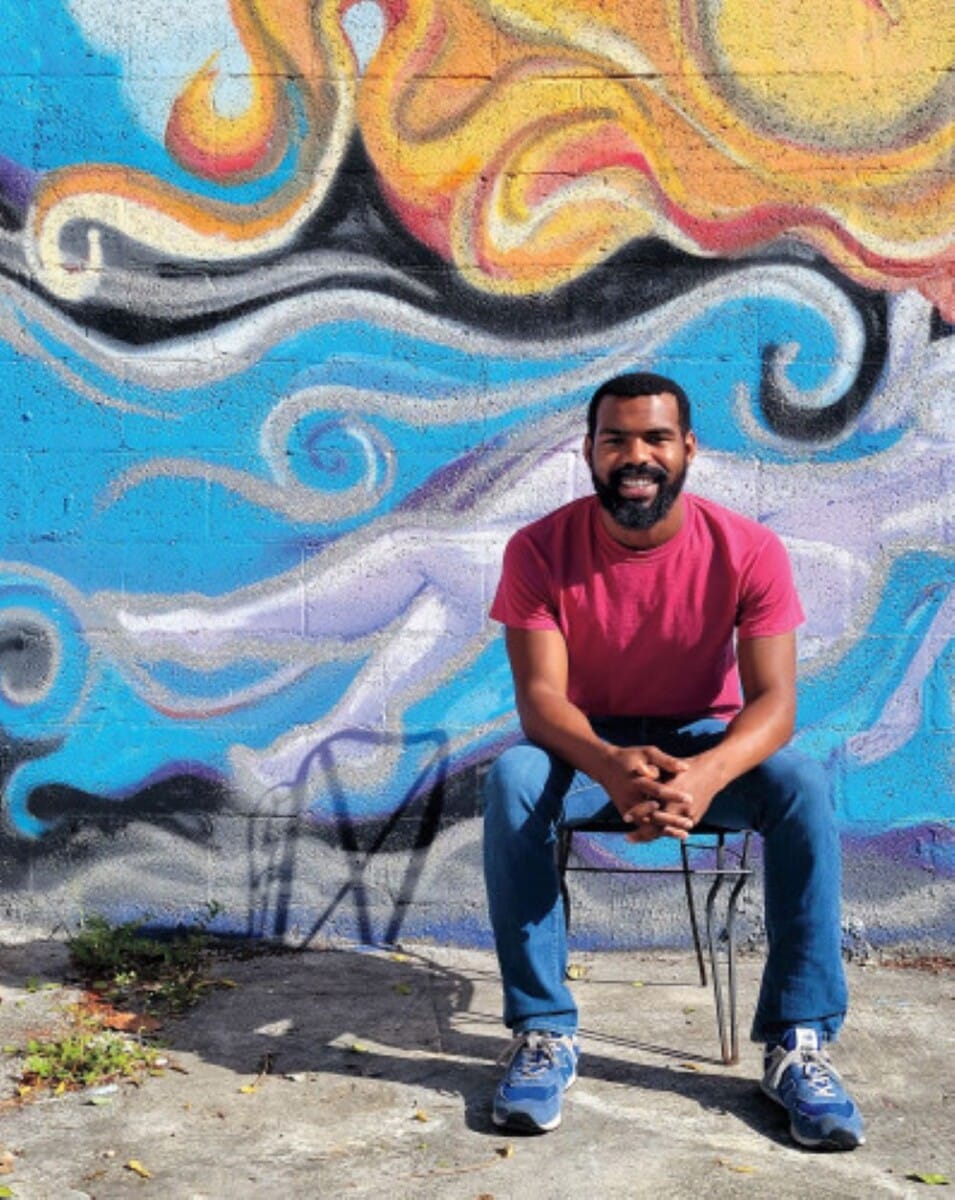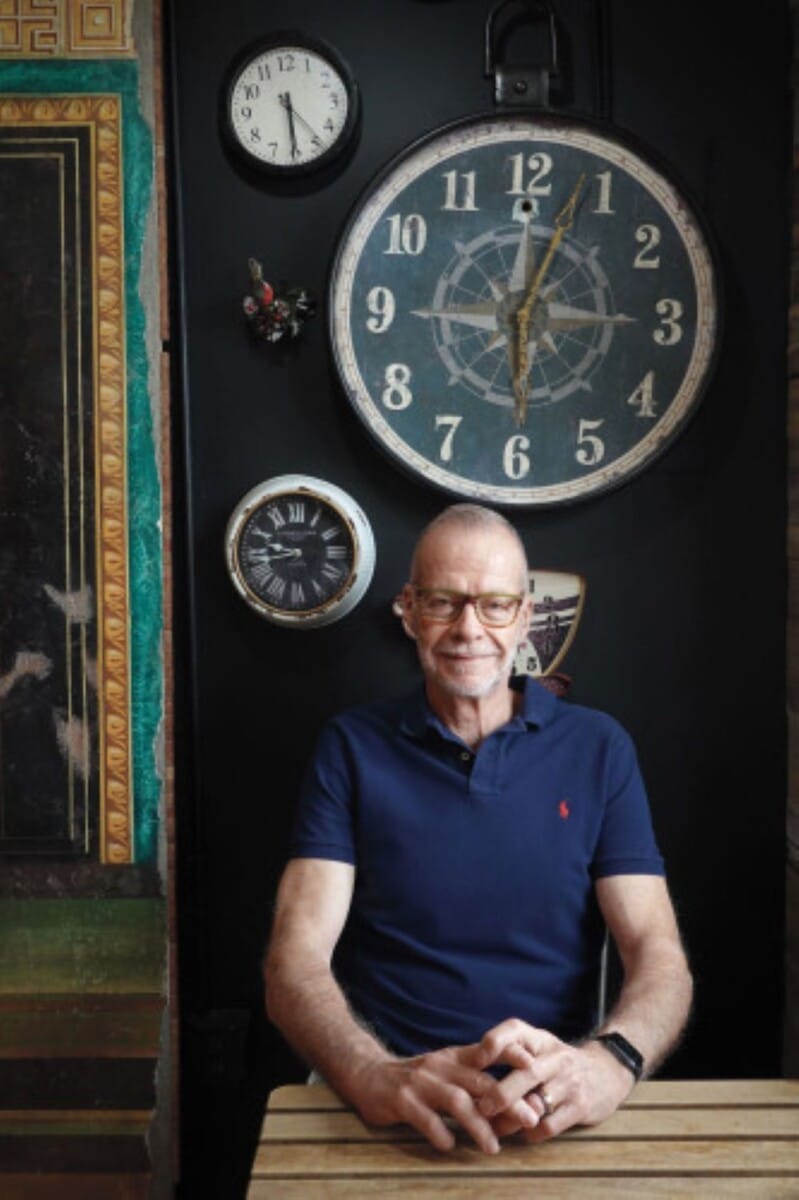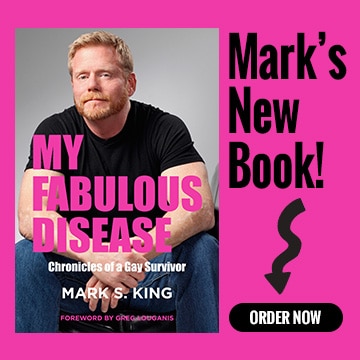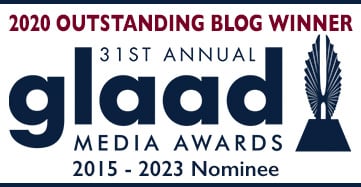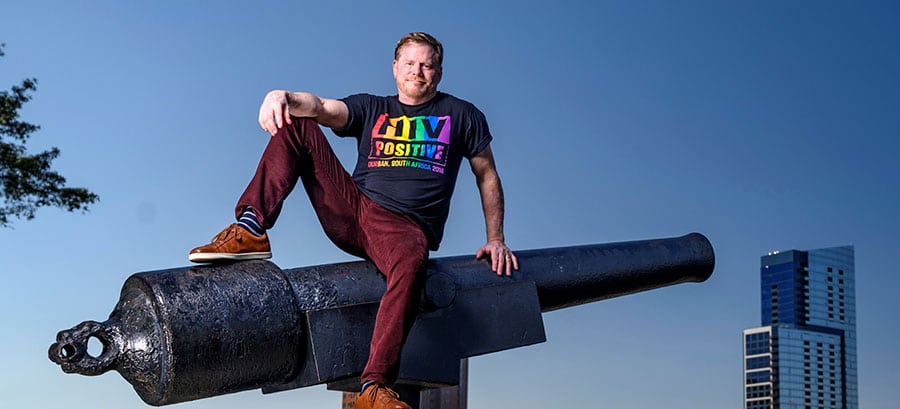As Chuck Parker stood over his room-mate’s dead body trying to process what he was seeing, a 911 operator on the phone urged him to perform cardiopulmonary resuscitation (CPR). Parker would have done it, if he had thought there were any chance he might revive his friend, but he knew the time for emergency intervention had long since passed.
Mark Wingo, Parker’s roommate of more than 12 years, had been dead for several hours. “I worked in a hospice,” he tells POZ only two days after the horrific episode, “so I have seen someone who has just passed away—they didn’t look like that.”
The remains had lost all color and lay cold and stiff amid the shambles of the bedroom, wedged down between the mattress and the footboard of the bed, as if Wingo had tried to escape something or bury himself.
The 911 operator continued to urge Parker to perform CPR until help arrived. “I started screaming at her,” he recalls, his voice thick with exhaustion and anger. “I yelled, ‘He’s dead, dead, dead, he’s fucking dead!’”
Only the night before, Parker had called paramedics to their apartment. He had been alarmed by Wingo’s bizarre behavior, including isolating in his room for the previous few days. The emergency medical technicians repeatedly exhorted Wingo to please get in the ambulance and go to the hospital, but he refused. The next morning, he was dead.
Wingo was now yet another statistic of the rising crystal methamphetamine overdose death rate. His death was the climax of years of sporadic meth use and the erratic behavior and broken promises it produces.
Parker shared a post on social media hours after Wingo’s body was taken away. He didn’t skirt around the cause of death, as often happens with drug overdoses. He made it clear that Wingo died of addiction and encouraged anyone who might be struggling to reach out for help.
“I got 20 or 30 hate messages for posting that,” Parker says, as if he had betrayed his friend in some way. “Mark’s family had stepped away from him a while back, but his sister supported my post completely.”
The reluctance to publicly discuss something that is killing gay men in alarming numbers has a chilling, familiar ring to it. The fact that Wingo, a long-term survivor of HIV, sidestepped one personal health crisis only to be killed by another compounds the tragedy with irony.
“We’re doing a huge disservice when we don’t name addiction,” says sex and addiction therapist David Fawcett, PhD, LCSW, CSAT, “because the problem is escaping our grasp.” Fawcett is based in Wilton Manors, Florida, where meth overdoses among gay men have risen so sharply that the community’s police chief contacted Fawcett for advice.
“Almost every weekend there is another death here, and the cause is never named,” he says. “I understand the needs of families and their right to privacy, but this is an epic battle against the stigma of addiction and addiction itself. Privacy is, to an extent, at odds with that.”
According to a recent study by the National Institute on Drug Abuse, overdose deaths involving crystal meth nearly tripled from 2015 to 2019. The study also suggests that, while use of meth continues to rise, “higher risk patterns” of use, such as injection drug use or using more frequently, are climbing and contributing to higher overdose numbers.
In other words, more people are using meth and using it more intensely, and a lot more of them are dying as a result.
Fawcett warns that the chemical makeup of meth (also known as “crystal” and “tina”) has changed drastically since large cartels began manufacturing the drug. “Overdose deaths are not coming from meth itself,” says Fawcett, “but the fentanyl that is often on board, either because the meth is made with fentanyl in it, or because people are going to stronger opioids that include fentanyl to come down from the meth.”
Although meth use has grown across every demographic group, the drug still has a very particular cultural grip on gay men. The National Survey on Drug Use and Health found that meth use was more than four times higher among gay men compared with straight men. For many younger gay men, meth use is sometimes part of the coming out process itself.
“The only real exposure to the gay world I had was with meth,” says Breaun Randle, a 25-year-old gay man who began using meth when he started to explore his sexuality after high school. “The first gay friend I hung out with was a meth user, and then I branched out and found more users. It just seemed to be what people did.”
Teenagers coming of age don’t inherently know about HIV risks either. “I didn’t know much about HIV at all,” Randle admits. “I thought a sexually transmitted infection was something you just got treated. No one talked about their HIV status on the apps I was using. It was never really a big concern of mine.”
As meth became more central to Randle’s everyday life, he sought out experiences that could pierce the numbness of being high, increasing his risk. “Nothing was exciting anymore,” he says. “I’d done it all. I was desensitized to the stimuli.”
“Experimenting with drugs is normal human behavior,” counsels Fawcett, “but this drug can pull people into darker corners of our world.” It is common for gay men using crystal meth to push their own boundaries of risk, even far beyond their authentic sexuality. “People on meth can end up in scary places, doing things that wouldn’t ordinarily happen. The thrill becomes primary.
“Meth is not inherently a sexual drug,” Fawcett adds, noting its migration between very disparate groups, from Nazis to bikers to straight folks in Appalachia to urban gay men. “A lot of people use it for weight loss or increased energy,” says Fawcett. “It’s gay men who really took a feature of meth—the increased sexual appetite—and linked it to this sexual party aspect of it. We have an arousal template, and meth hijacks it. People have gotten into an extreme sexual template, such as satanic fantasies or transmitting HIV. These are fantasies that their sober minds would not conjure.”
When Randle entered a drug rehabilitation facility at 22 years old, he tested HIV positive. “I have no idea when I got it or from whom,” he says. “As time went on, I needed more to excite me sexually. I guess I expected to get HIV.”
“Meth is not just a quick, fun party drug,” warns Fawcett. “It’s a devastating and toxic drug that really does a lot of long-term damage to people emotionally.” Fawcett wrote about the fusion of meth and sex in his influential 2015 book, Lust, Men and Meth: A Gay Man’s Guide to Sex and Recovery.
“Meth is also an amazingly potent emotional painkiller,” Fawcett adds. “There’s a lot of emotional stress and pain out there, and this drug allows people to drop out of their lives and just not feel. That’s what keeps people coming back despite the wreckage it can cause.”
Doug Rose knows something about the pain and isolation of being a long-term survivor and the escape that meth can provide.
“From the time I was diagnosed with HIV in 1990,” Rose recalls, “I had feelings of worthlessness and undesirability. I found that if I used drugs like meth, all those thoughts went away. I felt viable again.”
Rose was nearly lost to AIDS after prolonged meth use; he eventually stopped using drugs and alcohol in 2008. Sobriety helped repair him physically, but much of his loneliness remained.
“I don’t have the looks I used to have,” Rose says about his prospects today. “Finding a partner is hard. People will tell me, ‘Oh, but you’re such a great guy, you should be able to find someone,’ and I respond, ‘So do you want to date me?’ and they say, ‘Oh, no, I didn’t mean me!’”
“It has been hard trying to be intimate with someone else over so many years,” he says. “What do I have to do? Do I have to go to the right meetings, the right civic groups, the right gym? None of that has worked for me.
“There has been no quick solution,” Rose says with resignation, “except for meth.”
A few months ago, Rose felt particularly vulnerable, and his addictive thinking took over. “I had sex on my mind, and I knew what hookup apps to use to get it. I didn’t even think. I just ran into a blind spot.”
Within hours, Rose was using meth again after having abstained for almost 14 years. “It wasn’t premeditated,” he says. “I just wasn’t able to pursue sex without pursuing crystal meth.”
Over the course of the next 10 days, the drug failed to produce the sexual thrills Rose had in mind.
“The sex was not great,” he says. “And there were consequences. In the 10 days I was using meth, my ID and credit cards were stolen, I spent money I did not have and I got COVID. The meth did not solve the sex problem or my need for intimacy. It just didn’t.”
The dangers of meth use are dramatically higher for older people and for people living with HIV.
“With meth, you are flooring the gas pedal on your body and holding it there for four or five days,” Fawcett explains. “You have dopamine and adrenaline and all these stress hormones activated, which is extremely taxing on your body and your heart. So we see people having heart attacks and strokes.”
HIV medications and meth can be a particularly dangerous mix. So-called booster medications like ritonavir and cobicistat, which are components of several HIV treatment regimens, work by slowing down the metabolism of some antiretrovirals so that the HIV meds remain at higher levels in the body.
“Boosters will increase the blood levels of meth in your body too, so your body doesn’t clear meth at the rate it would ordinarily,” Fawcett warns. “That becomes very dangerous.”
Since ROSE’s relapse, he has returned to his recovery program, but life without drugs doesn’t offer easy answers. “I know that when my life is driven by purpose, I’m much happier,” he says. “For many years, that purpose was in the rooms of recovery. And I spent years doing HIV activism, and I felt valued and admired.” While he might not have a romantic partner in his life right now, Rose’s relapse has reminded him that meth will only worsen his situation.
For his part, Randle continues to participate in a recovery program and has a sunny outlook. “I find other comforts today,” he says. “I was discomforted for a long time, and I don’t have to live like that anymore. I’m on HIV treatment and am undetectable. It’s a huge responsibility to take care of myself.”
Randle also relates differently to other gay men. “My friendships are more intimate,” he says. “I have great friends who are loving and supportive, and I want to be that kind of person too.”
“This is a new way of life for me,” Randle adds gratefully. “I didn’t think people lived this way.”
Parker still deals with the emotional fallout of his former roommate Wingo’s overdose. “I’m angry,” he admits. “I feel like it was a very selfish thing for Mark to do. And I feel guilty because I feel relieved, because it’s been a lot of work. I went through a lot to support him.”
When Wingo was suffering during a serious cancer scare a few years ago, he said something disturbing that Parker hasn’t been able to shake. “Mark said to me, ‘I just want to feel good enough to do meth one more time,’” Parker confides. “Can somebody explain that to me, please? I don’t know how to process that remark.”
There is a lot that Parker wants to understand, like the baffling nature of meth addiction and its grip on his fellow gay men and why nobody is talking about all the dead bodies.
Most of all, though, Parker wishes that Wingo had agreed to get into the ambulance on that terrible night.
(This piece originally appeared in the June 2022 issue of POZ Magazine. Watch a video interview between Mark and the subjects of this interview here.)

